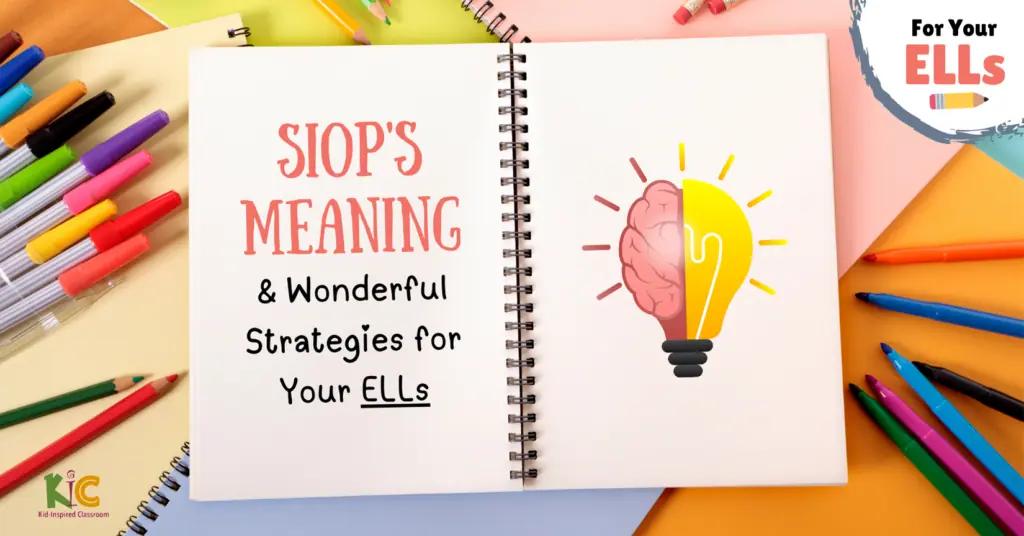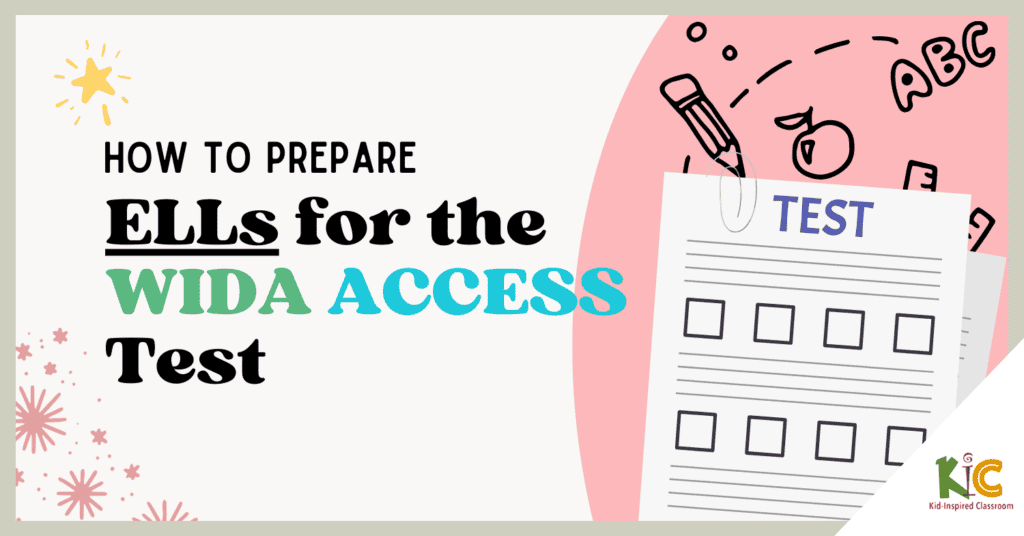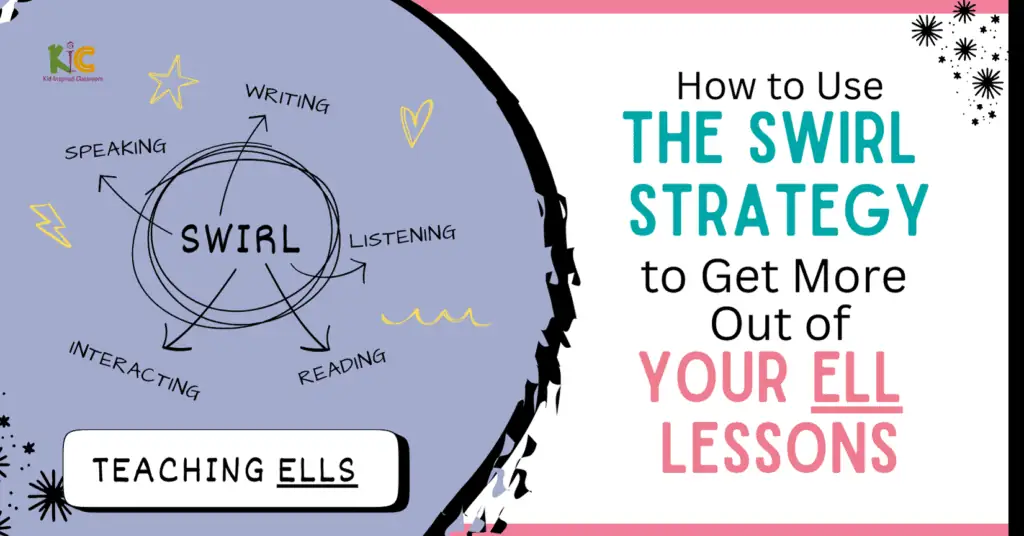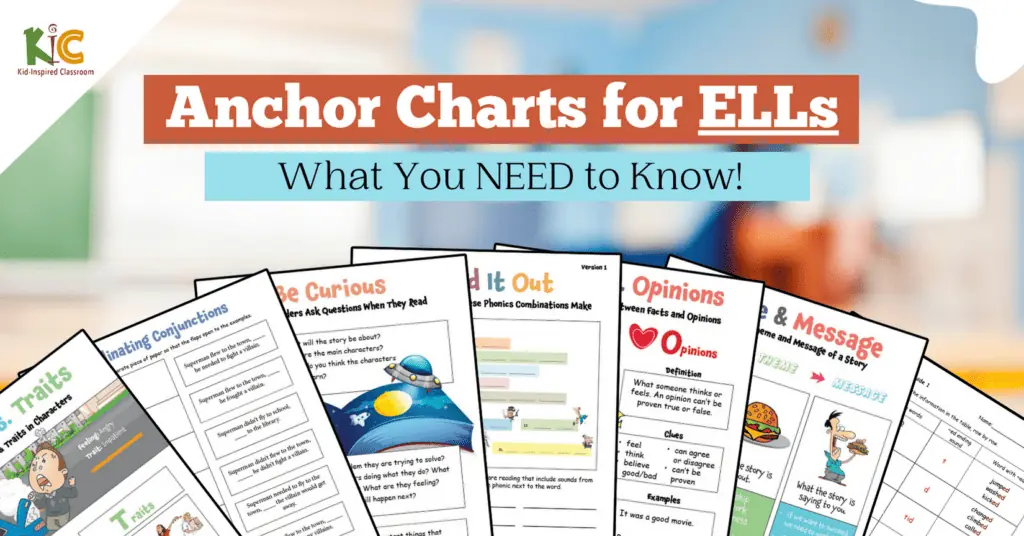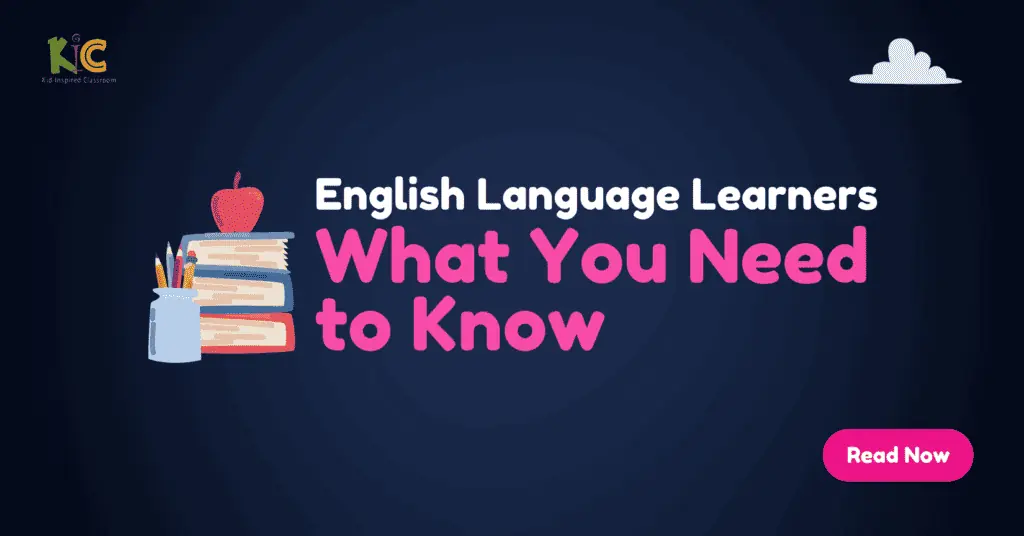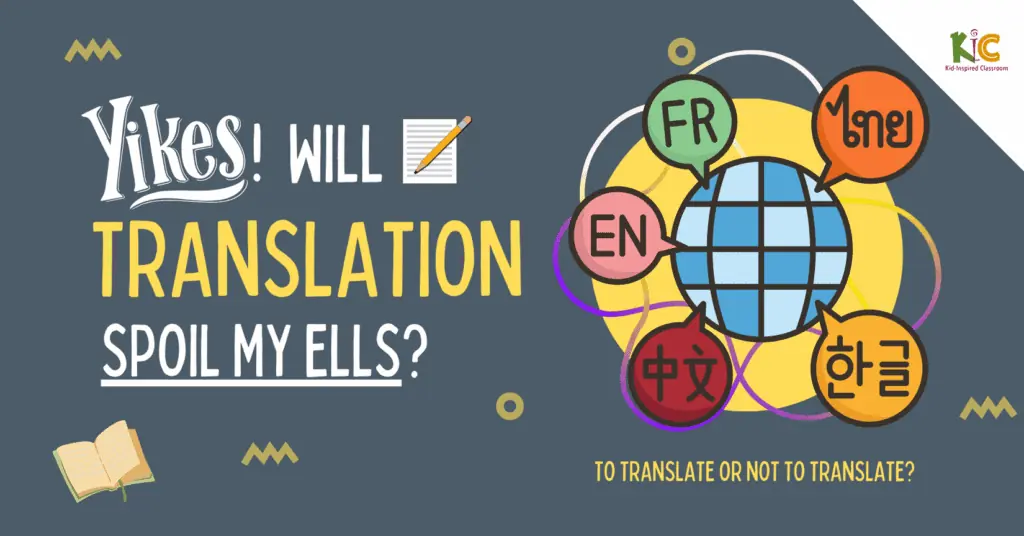
There are a lot of challenges to teaching students English, especially if you are in the United States or other native-English speaking environment where English language learners need to access grade-level content even when they’re English proficiency level is nowhere near grade level.
Translation can be an enormously helpful tool, especially when newcomers arrive,
BUT…
…translation can also become a crutch that holds students back if not used strategically.
Below, we’ll go over:
- Ways in which translation can be helpful
- Ways in which it can be unhelpful
- Strategies you can use today to make use of translation effectively in your classes
Let’s dive right in!
Just for clarification:
In this article, I am not referring to the activity of asking students to translate content from one language to another. That can be a helpful activity, depending on your context and goals, though it is a much harder activity than many realize, even if you’ve gained a certain amount of fluency with a target language.
I’m also not referring to the strategy of letting your students navigate lessons using their native language alongside English. This is translanguaging and is something that will happen regardless and can be hugely helpful for students as they learn. Translanguaging is only a theory that, when faced with an academic task, people who know more than one language use all of their language resources in whatever way best gets the job done. If you’d like to learn more about translanguaging and how to channel it into better results for your ELLs, check out the following article: How to Use Translanguaging in the Classroom with Your ELLs.
How to Use Translanguaging in the Classroom with your ELLs
We are here concerned mainly with the strategy of providing students with translations into the students’ native languages of the English content they are required to learn.
Often teachers refer to a student’s native language as L1 (language 1 or mother tongue) and English, in this case, as L2 (language 2 or the target language).
How Can Translation Benefit English learners?
There are a number of reasons why a teacher would want to provide translation when working with English learners, especially those arriving in a native-English speaking country and school where they are required to learn grade-level content.
Ways translation can be helpful:
- Accessibility: Providing translation to English learners makes the content more accessible to them. This can help reduce the language barriers that often prevent students from engaging with the material.
- Comprehension: For challenging topics, translation can sometimes help students better understand the content of their target language. When students are able to read and comprehend an overview of the content in their first language, they are better equipped to understand the material when it is presented in English.
- Vocabulary Acquisition: Translation can help students understand and learn new vocabulary more quickly.
- Confidence: Providing translation can help boost students’ confidence. When students are able to understand the content, they feel more capable and confident in their abilities to learn the material.
- Engagement: Providing translation can help engage students in the material. When students are able to understand the content, they are more likely to be interested and engaged in the material, which can lead to higher levels of participation and academic success.
- Inclusivity: Providing translation to English learners can help create a more inclusive classroom environment. When students feel like their language and cultural backgrounds are valued and respected, they are more likely to feel included and engaged in the learning process.
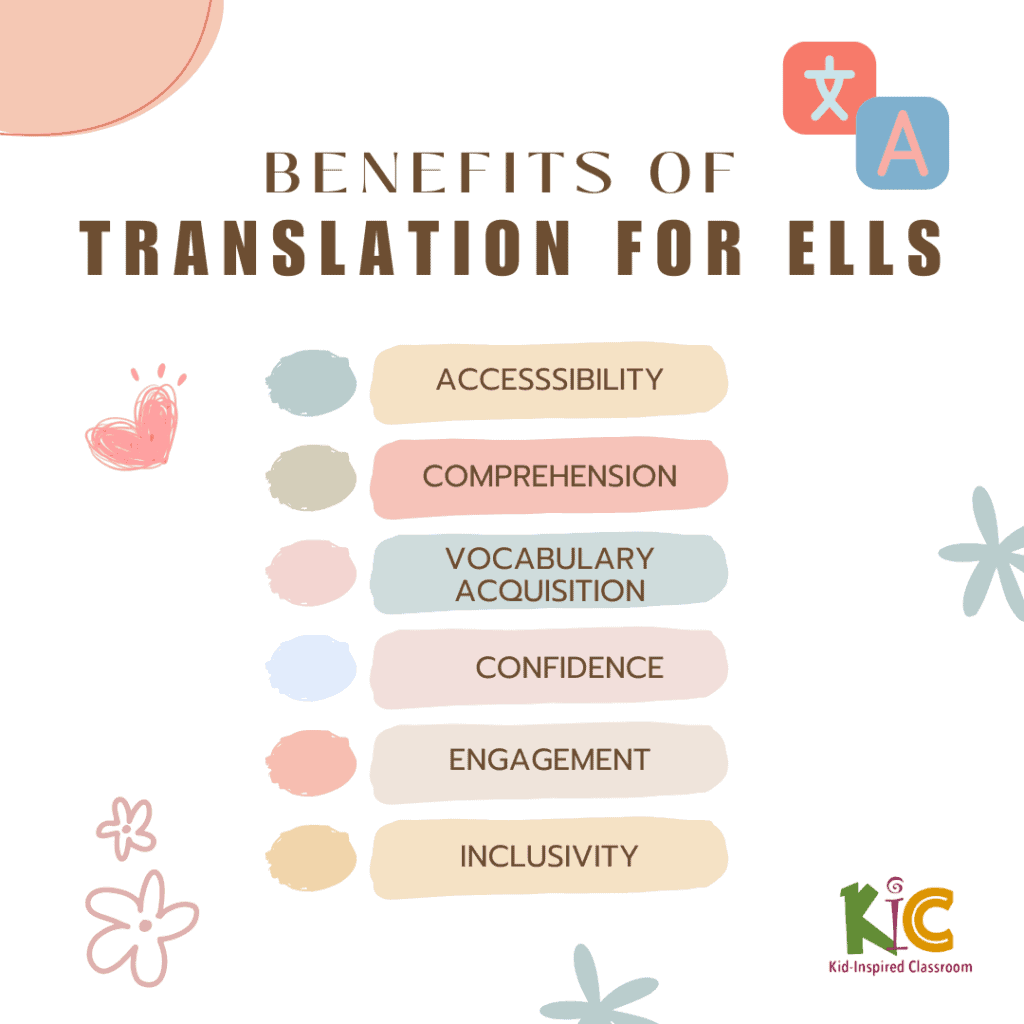
How Can Translation Spoil my ELLs?
There are lots of ways translation can be helpful, but there are ways it can be unhelpful for learning a target language as well. It’s important to use translation strategically and intentionally.
Here are some ways translation can be unhelpful:
- Over-reliance: This is probably the most important. If students rely too heavily on translation in their mother tongue, they are much less likely develop the language skills they need to understand, speak, read, and write in English effectively. This can severely impact their future academic success.
- Slow Progress: If students become too reliant on translation, it can slow down their language acquisition process. The only way to learn a language is to use it. Learning a new language takes time, practice, and repetition. The more students defer to the translation of content, the less they will engage with the language they’re supposed to be learning. AND, unless they are particularly motivated students, they WILL defer to the translation because it is so much easier and less exhausting.
- Limited Resources: Providing translation can be resource-intensive, especially in terms of time and funding. Schools and teachers may not have the resources to provide high-quality translation services for all students, which can create inequities and disparities in the classroom.
- Preparation for Real-World Situations: In real-world situations, English learners may not have access to translation services. Therefore, relying too heavily on translation in the classroom may not adequately prepare them for the challenges they may face outside of school.
- Teachers Aren’t Perfect: My wife debated with me about whether I should include this one, but I think it’s helpful for us to be honest with ourselves. Some language teachers know the native language of the children they’re teaching and enjoy practicing it themselves and/or enjoy putting their ability on display for others to admire. Another example is the temptation to provide students with translation because it may seem easier than the alternative of trying to find ways to help them engage with the English directly. Especially nowadays with tools like Google Translate. There is a temptation just to drop everything into a translator and be done with it. The students are usually happy with this as well since it is often easier for them too. (Foreign languages are hard to learn.) These are obviously poor reasons for using translation, but none of us are perfect, and we all have these types of struggles, whether we recognize them or not. Laying down our pride and being honest with ourselves about our motivations, failures, successes, etc. is part of the hard but crucial work of being a teacher.
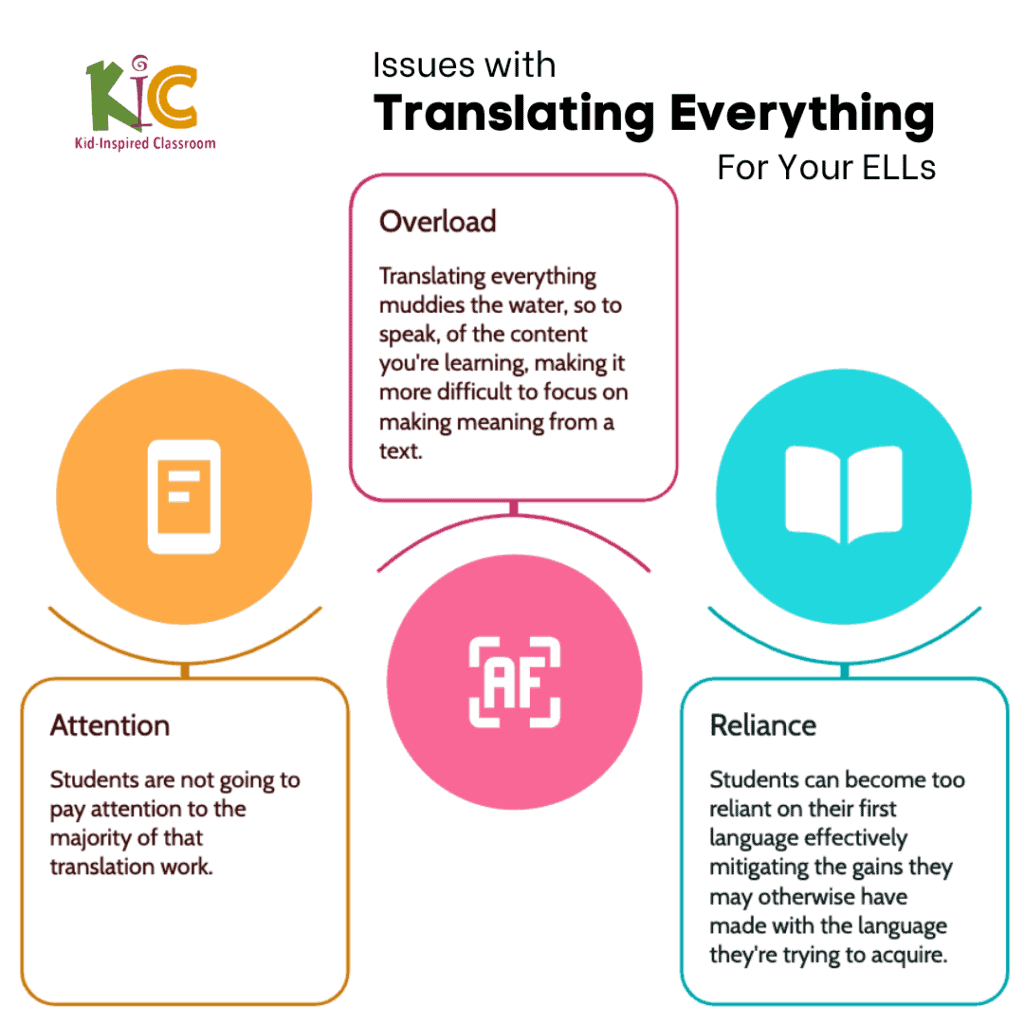
How to Use Translation Productively
First off…
…use translation strategically and intentionally. Avoid translating EVERYTHING for your students.
I have learned multiple foreign languages and I’ve always found translation to be a helpful part of that process, but would have learned none of those languages if I had engaged with them entirely in English translation.
In fact…
…in high school and college, that’s exactly what I did with Spanish which is why I never learned to speak, read, or write in Spanish in high school and college. This is the same reason most students in language classes in public schools in the United States gain little to no fluency with the language they’re supposed to be learning.
I also owned and operated an English language school in Taipei, Taiwan for over a decade and spent countless hours observing classes and tracking data to help us improve on our curriculum and teaching strategies. It was very clear over the course of time that, if given a choice, students would always choose their native language over English. It is just such a natural tendency. Understanding our native language is easy and interacting in a new language is exhausting. Most K-12 kids just aren’t motivated enough in any meaningful way to step up to the challenge of engaging with a new language, unless it’s required, or they have a bilingual home.
“Don’t translate everything, or the EL will tune out what you say in English. Instead be strategic to use the primary language to clarify confusions.”
Singer, Tonya W.. EL Excellence Every Day (Field Guide) (p. 24).
Effective Strategies for Utilizing Translation
Strategy 1: Clarification
One way to use translation strategically is to clarify directions for our English learners. As Singer notes in her book EL Excellence Every Day,”teachers can use primary language to clarify directions for students who are just starting to learn English. This strategy can help students understand what they need to do and feel more confident in completing the task.”
Strategy 2: Annotation
This may be favorite. Teachers can get students to annotate texts they are working with. Students write in the margins around the sides of a text adding a translation, a short definition, an image, or whatever else they find helpful to remember the meaning of a word, phrase or sentence. If you don’t want to write in a textbook, you can photocopy the page, shrinking the page in the photocopy settings so that the margins are bigger around the sides. Here is an Edutopia article on annotation. It does not discuss translation but you can see how easily it would fit.
Strategy 3: Compare & Contrast
Another way to use translation strategically is by using it to compare and contrast the similarities and differences between English and the students’ first language. This strategy can help students understand English better but it can also help them understand their native language better as well.
Strategy 4: Translate It
Another great activity for your students is to get them to translate English content into their native language or vice versa. This is a great activity that helps them practice literacy in both languages. If students are struggling to write in English, they can write in their L1 and then translate it to English afterward. Being multilingual is a huge benefit and we want to support our students’ multilingualism in any way that actually requires them to be multilingual. This activity can be very time-consuming and challenging though, even for students who have some fluency with English, so be careful about assigning too much translation work before seeing what your students are able to handle.
Strategies for Helping Students Access Grade-Level Content without Translation
There are of course many strategies that you can use to help students engage with English directly without the use of translation at all. Check out the sections of the blog below to learn some ideas.
Check out the Entire Kid-Inspired Blog:
Thoughts From Other Teachers on Using Translation with ELLs
This one comes from Jennifer Carella who has seen issues with students over-reliance on translation:
“Yes!! It is so important to be strategic with when and how we use translation for students. I am really starting to see the negative impact of over reliance on translation with my ells. I’ve been thinking about how to teach students the importance of using translation sparingly, and focusing on using the English they know and are building to express ideas, even if their message is incomplete or needing revision. Maybe saying it like this: if I bike up a hill each day using an electric bike, my legs aren’t getting much stronger. When my bike is broken or not available, I can’t make it up that hill.”
Jennifer Carella
This one is from Noemi Blair who translates all content for her older high school SIFE students:
I think it depends on the situation. I teach at the high school level. I have seen how providing translation all the time does hinder English language development but increases student academics. If a SIFE student enrolls at age 17 with no credits and starts at 9th grade, the chances of completing 4 years of high school are slim. I translate all content material. We tackle ELD in my ESOL class. If that slows down ELD but allows the students to get caught up in core content classes, the chance the student will stay in school is better. This is just my personal experience.
Noemi Blair
What are your thoughts?
Do you use translation with your students? How do you use translation with your students? Let me know in the comments below!
